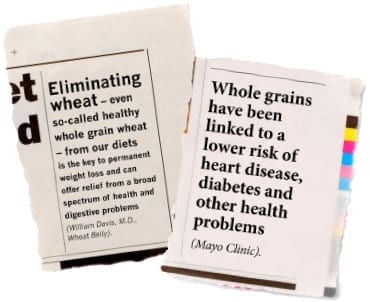
I’ve had it. Hand me that pint of Ben & Jerry’s Chunky Monkey and a big spoon.
Seriously, in America and in countries around the world that are increasingly consuming highly processed diets, we face challenges in understanding what we’re eating and what we should eat. Conflicting “wisdom” advises us that some foods are critical while others are evil, and vice versa. If we eat or avoid certain foods, we’re guaranteed to lose weight, reduce joint pain, lower our risk of diabetes, improve our sex lives, get better jobs, win friends and influence people.
We have greater access to food now than at any other time in human history, but do our expanding waistlines and chronic disease rates reveal that we have too many choices, particularly bad ones?
We’re also overwhelmed with food choices, many not so good for our health but marketed like they are. Overwhelming, too, are the ingredient lists on the vast numbers of processed foods in our stores. Pick a product off the shelf and you’ll see a host of unpronounceable additives, artificial flavorings and emulsifiers that extend shelf life or supposedly enhance flavor, often sacrificing nutrition. Would you really eat butilated hydroxytoluene (a preservative also used in jet fuel and embalming fluid) or xanthan gum if they weren’t “givens” in your cereal and salad dressing?
So what’s a body to chew? What can we do to improve the health of people and populations? Many communities and states are wrestling with these questions, and that’s a good thing: It means more individuals, organizations and governments are realizing we need to make positive changes that help people make better decisions in terms of eating and exercise.
In Iowa, for example, Governor Terry Branstad’s Healthiest State Initiative, a privately led, public effort What should we eat? to make Iowa numberone in specific categories by 2016, includes the Blue Zones Project, a collaboration of health insurer Wellmark Blue Cross and Blue Shield and Gallup-Healthways. Described in a book by National Geographic explorer/writer Dan Buettner, Blue Zones are geographically defined areas around the world where people reach age 100 at rates 10 times greater than in the U.S.; Buettner explored the commonalities of these areas that other communities and individuals can practice relatively easily, from ensuring citizens have attractive sidewalks and bike paths to choosing more plant-based diets.
First Lady Michelle Obama praised these efforts on Feb. 9 when she brought to Des Moines’ Wells Fargo Arena her “Let’s Move” campaign to fight childhood obesity. At the raucous event, at which 130 DMU students and employees volunteered, more than 12,000 middle school children joined NBC “Biggest Loser” trainer Bob Harper in push-ups, squats and jumping jacks, then high-stepped the “Interlude” dance, popularized by University of Northern Iowa basketball fans, with Obama and her celebrity guests.
Will these efforts succeed in reversing our current overweight, diabetes-addled and sedentary states? Will we seek salads instead of super-sized? That remains to be seen. But given that 17 percent of our children and more than one-third of U.S. adults are obese, we’d better start somewhere.

